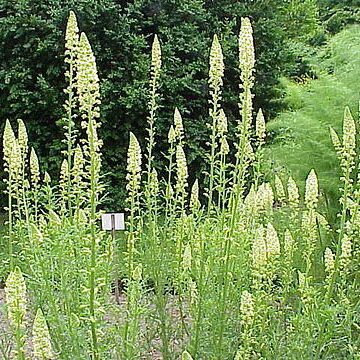Sep and pet each 4–8, commonly 5 or 6, the sep nearly equal, the pet unequal, at least the larger generally consisting of a rounded to oblong, flattened or concave base, bearing on its back one or more projecting appendages (seldom the pet merely fringed-cleft); upper pet the largest, the lateral and lower progressively smaller, with simpler appendages; stamens 10–25, subtended on the upper side by a large, rounded disk; carpels mostly 3 or 4; ours all herbs with dense terminal racemes of whitish to greenish or yellow fls ca 6 mm wide, in summer. 55, Eurasia, n. Afr.
Annual or perennial herbs; stems ribbed, pilose or with small conical hairs or papillae. Leaves rosetted and cauline, the cauline ones decurrent; small glands on either side near base. Bracts and sepals persistent or caducous; pedicels ribbed. Petal claws winged, the limb incised. Stamens usually 12–25; filaments 2–3 mm long; anthers versatile, at first introrse, longitudinally dehiscent. Ovules 8–12 per placenta; styles short. Seeds smooth or papillose or rugose; embryo curved.
Annual to perennial. Lvs entire to pinnatifid. Racemes or spikes terminal and lateral. Sepals 4-8; petals 4-8, usually with dilated claw and lobed limb, the posterior petals usually more divided than the anterior. Stamens 7-40. Carpels 3-4, united below into a 1-locular ovary, remaining open at apex. Ovules numerous, on 3-4 parietal placentae. Fr. a capsule, its constituent follicles united at base, free and open at apex.
Herbs annual or perennial, erect or spreading, ± decumbent, rarely shrubs, pubescent or glabrous. Leaves entire to pinnatifid; stipules glandular. Flowers borne in racemes. Sepals 4-7. Petals 4-7, usually lobed, clawed at base. Stamens 7-40, forming a disc at base. Carpels 3-6, united at base; placentas 3-6; ovules numerous. Capsule 1-valved, opening widely at maturity.

